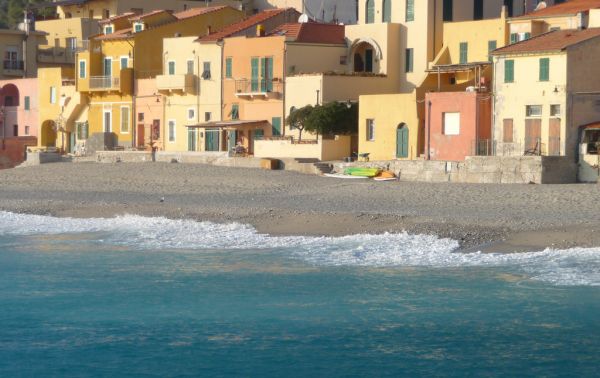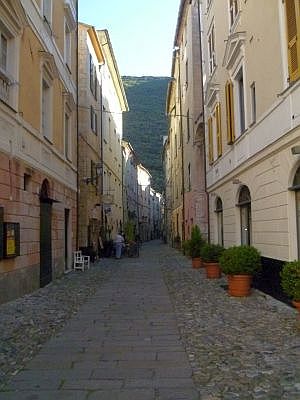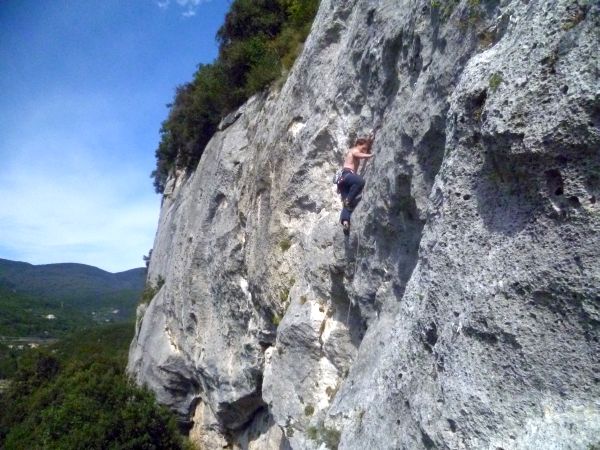Even “the best laid plans…,” remarked Robert Burns and as a fellow Scot raised on a climate of snow in June and rain quite a lot of the rest of the time, he should know. When it comes to travel it often seems that half of the adventure lies in the revision of plans that have gone awry. Hoping to escape the dismal British summer, still dragging its heels in July (wettest summer since 1912, anyone?), my work-shy companion and I devised a European adventure. We would stray far from the beaten track of Nice and Sardinia and instead travel to the Far East of the continent.

With thoughts of tiny Slovakian villages nestled atop of mountains and returning weighted down with hand painted china and brightly woven throws we checked the weather forecast. As an afterthought, you see. It was to rain, not just a smattering but monumental thunderstorms as far as the eye, or at least the internet, could see and just as widely. So we made what was to be the best decision we had taken all year and journeyed to a little inlet on the Italian Riviera, known as Finale Ligure.
Founded by the Marquis Del Caretto, Finale Ligure is an old Roman border area consisting of several overlapping villages facing out to the crystal clear waters and white cliffs of the Gulf of Genoa. Julius Caesar built a road here in 100 BC and a mere twelve centuries later the main hubs of Final Borgo and Final Marina appeared, each with their own distinct charm and purpose. The legacy of La Belle Époque can be felt in the charming decadence of the more recent architecture, which trickled down from the nearby cities of Turin and Milan. With all of the splendour of the nearby French Riviera and little of the commercialisation it is a truly beautiful place to explore. Neither an urban playground nor a secluded wilderness, Finale Ligure contains endless possibilities for relaxation and adventure; ideally both. It was enough to tempt Eva Herzigova, now a resident of nearby Varigotti, as well as Sophia Loren and Ernest Hemingway, who also found the time to explore the rocky coves.
 The ancient town of Final Borgo is the main attraction and stands in the long shadow of the Rock of Caprazoppa. The seventeenth century Basilica of San Viaggio is the most important and revered site within the village, a richly adorned echoing space in sharp contrast to the quiet reflection of its inhabitants. Though indebted to the yearly pilgrimage of tourists from Munich and Milan, Final Borgo is a town very much inhabited by the ‘Finalese’. During the hot summer days sun-wizened men sip creamy espressos in the shade of the main square and around intricate cast iron tables in the ancient maze of narrow streets, whilst the predictably lithe younger generation serve Pizza slices and gelatos to pale tourists and lounge playfully on the beaches during four-hour midday ‘siestas’.
The ancient town of Final Borgo is the main attraction and stands in the long shadow of the Rock of Caprazoppa. The seventeenth century Basilica of San Viaggio is the most important and revered site within the village, a richly adorned echoing space in sharp contrast to the quiet reflection of its inhabitants. Though indebted to the yearly pilgrimage of tourists from Munich and Milan, Final Borgo is a town very much inhabited by the ‘Finalese’. During the hot summer days sun-wizened men sip creamy espressos in the shade of the main square and around intricate cast iron tables in the ancient maze of narrow streets, whilst the predictably lithe younger generation serve Pizza slices and gelatos to pale tourists and lounge playfully on the beaches during four-hour midday ‘siestas’.
If you want to get anything done in this town you have to shed the British Sunday timetable of late mornings and think like an Italian. That means rising with the sun and retreating from the fierce midday hours. Reserve your energies for the evening when Finale bifurcates into a seafront beauty parade, oiled by exquisite cocktails, and the quiet sophistication of the old town’s traditional restaurants and peaceful squares. Lit up by night, the Castel Gavone overlooks the evening festivities with a patricianly air. To celebrate the Opening Ceremony of the London Olympics, thousands of tiny brightly coloured lights were sent out to sea, forming a dazzling carpet of colour and lighting up the dark tide where it met the shore. It could have been tacky but the effect was mesmerising.
 As a year-round tourist destination, Finale isn’t short of accommodation, from ‘Turismos’ where rustic hostel accommodation is combined with local farm food and hospitality to rather grand and often slightly retro hotels. One of the best is the Hotel Punta Est, which provides splendid rooms within a restored 18th century villa. After feasting on produce grown among the hotel grounds, guests can enjoy a wander among an ancient olive grove or gaze out to sea. If this isn’t enough to render you catatonic then the hotel also provides Tai Chi sessions from Grandmaster practitioner Wong Kiew Kit. Private beaches are de rigueur in Finale and so of course there is one of those – the piece de resistance of the Punta Est is the enchanting underground spa and grotto, which features large teak hydro massage tubs and water trickling down stalactites into granite carved basins.
As a year-round tourist destination, Finale isn’t short of accommodation, from ‘Turismos’ where rustic hostel accommodation is combined with local farm food and hospitality to rather grand and often slightly retro hotels. One of the best is the Hotel Punta Est, which provides splendid rooms within a restored 18th century villa. After feasting on produce grown among the hotel grounds, guests can enjoy a wander among an ancient olive grove or gaze out to sea. If this isn’t enough to render you catatonic then the hotel also provides Tai Chi sessions from Grandmaster practitioner Wong Kiew Kit. Private beaches are de rigueur in Finale and so of course there is one of those – the piece de resistance of the Punta Est is the enchanting underground spa and grotto, which features large teak hydro massage tubs and water trickling down stalactites into granite carved basins.
The faded 50s grandeur of the Hotel Boncardo and beachfront diner takes pride of place on the main drag of Final Marina, with a beach claiming one of the best (though busiest) spots in town. For those who tire of the sand or, like me, weren’t built to thrive in direct sunlight, handsome waiters clad in pristine white uniforms will serve ice cold drinks and cooked to order pasta dishes from the shelter of the veranda. Once my waiter had gotten to grasps with the idiosyncrasies of pigeon Italian spoken with a Scottish burr, we got along just fine and my Spaghetti Carbonara was deliciously light and smoky – Dolmio eat your heart out.
Though the sun-worshipers lining the beach are probably oblivious, the area is also a mecca for rock climbers, mountain-bikers and windsurfers, who populate the shores and limestone cliffs during the cooler winter months. If you are feeling adventurous then equipment (and instruction) can be found in all of these things and will make an afternoon dip in the sea feel even more deserved.

Despite its spot on a coast littered with the wealthy and the beautiful of Europe, Finale Ligure escapes without being tarnished by the vulgarity which might be associated with nearby Monte Carlo or Monaco. This is a place for elegance and timeless style rather than exhibitionism. Had Grace Kelly explored just a few hours up the coast from her own fairy tale kingdom, she would have fitted right in.




